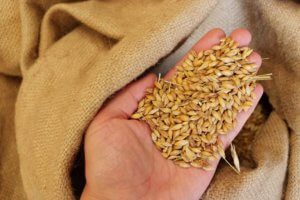
Ukraine in January-June 2018 reduced electricity exports by 0.9%, or 28.602 million kWh, compared to the same period in 2017, to 3.135 billion kWh, Ukraine’s Ministry of Energy and Coal Industry told Interfax-Ukraine. However, electricity supplies from the so-called energy island of the Burshtyn thermal power station, towards Hungary, Slovakia and Romania grew by 8.4%, or 154.737 million kWh, to 2.008 billion kWh.
Electricity sales to Poland increased by 17.5%, or 107.779 million kWh, to 723.331 million kWh. Electricity exports to Moldova were 403.986 million kWh, which was 41.9%, or 291.111 million kWh, down on January-June 2017.
In June 2018 alone, exports of Ukrainian electricity stood at 481.772 million kWh, which was 11.6% down on June 2017 (545.058 million kWh). Ukraine did not sell electricity to Belarus and Russia in January-June of 2017 and 2018. In the first six months of this year, Ukraine imported 18.129 million kWh of electricity, namely 17.417 million kWh from Russia and 0.712 million kWh from Belarus. The imports are recorded in SE Energomarket’s contracts as in-process transfers.

Ukraine exported conventional weapons to six countries under contracts in 2017, the Ukrainian State Service of Export Control said in a report detailing international transfers of individual types of Ukrainian armaments last year. The figures published by the Ukrainian State Service of Export Control since 2004 are a key to the annual United Nations Register of Conventional Arms.
According to the latest report, in 2017 Ukraine exported 16 units of armored military hardware, namely 16 Oplot main battle tanks to Thailand, and also more than 17,000 small arms and over 800 light weapons to the United States, Uzbekistan, Jordan, Mongolia, and Turkey.
According to the figures, the main importer of Ukrainian small arms and light weapons in 2017 was the United States, which bought 15,040 automatic weapons and submachine guns, and also 790 portable anti-tank rifles and grenade launchers. Uzbekistan purchased 2,000 automatic weapons and submachine guns from Ukraine last year. A total of 22 portable anti-tank rifles and grenade launchers, two hand-held under-barrel and mounted grenade launchers, and one revolver were exported to Jordan, ten rifles were delivered to Mongolia, and three trigger mechanisms for anti-aircraft guns were exported to Turkey.

Ukraine purchased nuclear fuel for a total of $213.511 million in January-May 2018, which was 21.7% more than for the same period in 2017 ($175.490 million).
Over the period under review, Ukraine bought Russian nuclear fuel worth $138.645 million for Ukrainian nuclear power plants, while nuclear fuel shipments from Sweden totaled $74.867 million, the State Statistics Service of Ukraine said.
Thus, the share of purchases of nuclear fuel by Ukraine in January-May-2018 from Russia’s TVEL in monetary terms was to 64.9%, that from Westinghouse (Sweden) stood at 35.1%.

The growth of Ukraine’s gross domestic product (GDP) in the second quarter of 2018 slightly accelerated, to 3.2% from 3.1% in the first quarter, the National Bank of Ukraine said in the July inflation report. “In Q2, 2018, Ukraine’s economy kept growing. The high business expectations of companies were evidence of sustained growth in investment activity. The further increase in personal income fueled consumer demand. Overall, real GDP growth in Q2, 2018 is estimated at 3.2% year-on-year,” reads a report on the central bank’s website.
The steady rise in consumer demand was propelled by stronger household income (wages, pensions, remittances). The latter supported the high growth rates of retail turnover, the NBU said.
“As in Q1, the disruption of ties with the non-controlled territories last year had an impact on the pace of economic growth. As a result, gross value added in the metallurgy, mining industry, and energy sector kept growing despite being held back somewhat by repairs at several large enterprises of the mining industry and metallurgy,” the report says.
As reported, a week earlier the National Bank confirmed the forecast for Ukraine’s GDP growth in 2018 and 2020 at 3.4% and 2.9% respectively, but worsened expectations for 2019 from 2.9% to 2.5%.
In the inflation report, the NBU also confirmed the inflation forecast for the current year at 8.9%, but improved the forecast for underlying inflation to 7.1%.
The growth of Ukraine’s economy in 2017 accelerated to 2.5% from 2.3% a year earlier with the increase in inflation to 13.7% from 12.4%.

The European Bank for Reconstruction and Development (EBRD) will issue a long-term loan of up to $20 million to Astarta, a Ukrainian agro-industrial holding, to finance working capital necessary for plant growing, sugar beets and soybeans processing. EBRD Senior Adviser on External Relations Anton Usov told Interfax-Ukraine the board of directors made a corresponding decision at a meeting on July 18.
The bank says its funding will also contribute to improving efficiency and productivity through the introduction of modern IT solutions and farming practices and support of stronger ties with local suppliers.
According to information on the EBRD’s website, the overall valuation of the project is estimated at $242 million.
As reported, the EBRD in October 2017 issued a $25 million loan to Astarta for seven years for the construction and purchase of sugar and grain storage facilities.
Astarta is a vertically integrated agro-industrial holding that operates in eight regions of Ukraine. The holding includes eight sugar factories, agricultural enterprises with a land bank of about 250,000 hectares and dairy farms.

Exports of grain crops in the 2017/2018 marketing year (July 2017 through June 2018) totaled 39.4 million tonnes and amounted to $6.4 billion, according to the State Fiscal Service of Ukraine. The largest buyers of Ukrainian grain in this period were Egypt ($ 724 million, with a share of 11.4%), China ($594 million, 9.3%), Spain ($459 million, 7.2%), Indonesia ($375 million, 5.9%) and the Netherlands ($348 million, 5.5%).
In particular, Ukraine exported 17.8 million tonnes of maize worth $2.86 billion (China’s share was 16.4%, Egypt accounted for 13.6%, and the Netherlands for 12.2%). Exports of wheat totaled 17.2 million tonnes worth $2.83 billion (Indonesia with 13.3%, Egypt with 11.8%, and Bangladesh with8.7%); while exports of barley stood at 4.3 million tonnes worth $0.64 billion (Saudi Arabia with 41.2%, China with 19.3%, and Libya with 6.6%).
As noted, 99% of all grain was shipped by sea (39 million tonnes). The ports of Chornomorsk (formerly Illichivsk) accounted for 22% of all grain shipments by sea, the port of Odesa accounted for 19%, Yuzhny for 19%, and Mykolaiv for 18%. At the same time, 306,000 tonnes (0.8%) was exported by rail and almost 80,000 tonnes (0.2%) by road.
Ukraine in the 2016/2017 marketing year exported 43.8 million tonnes of grain, the Ukrainian Ministry of Agrarian Policy and Food earlier reported.